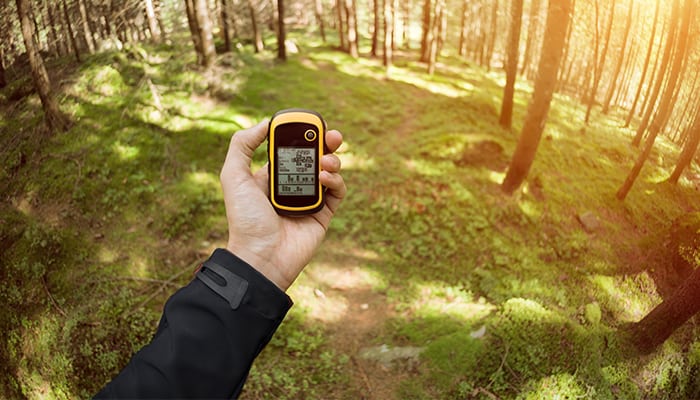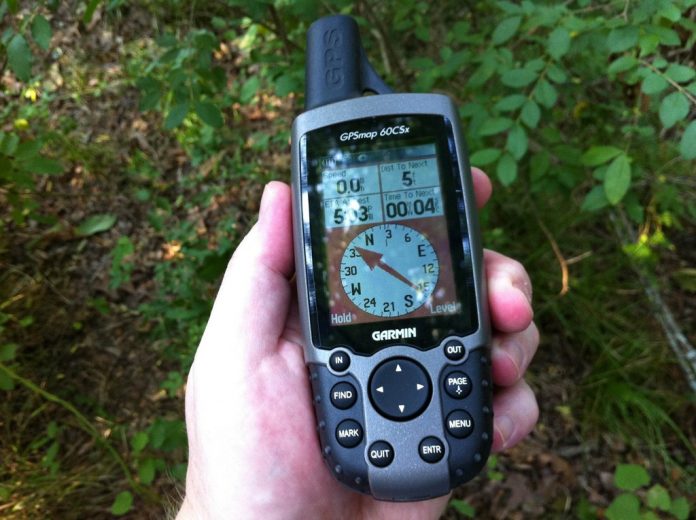Geocaching is a game that has continuously grown in popularity ever since its beginnings in 2000. It is a global positioning game played by using a handheld GPS to locate hidden caches containing trade items. The coordinates of the caches can be found on a website and then loaded into the GPS. After that it’s just a matter of finding the location and then trying to find sometimes very cleverly hidden caches.
Cachers, the people hunting for the geocache, will often spend many hours playing the game trying to find as many caches as possible. Geocache owners, the people placing the caches, similarly spend many hours trying to find the perfect hiding place, sometimes building very well camouflaged containers in which to hide the “swag” or items placed inside the cache.
GPS’s, Travel Bugs, and Geo Coins
For cachers and owners gift buying can be easy once the game components are understood. A good GPS is first and foremost on the gift buying list for either party because coordinates are required to both place and locate a cache. Handheld GPS’s can be purchased for less than $100 at sporting goods and electronic stores.
Next on the list are “Travel Bugs.” Travel bugs come in a set of two individually numbered metal tags. One tag is placed on an item, which then becomes the travel bug, and is then placed in a cache. The other tag is retained by the owner of the travel bug. The tags allow other players to move the travel bug from cache to cache and track its progress on the website by using the travel bug ID number.
Geo coins are another much sought after item for cachers. These are specially numbered trackable coins that can be tracked much like the travel bugs. The great thing about Geo coins is that they can be custom designed to create new and unique coins. Commission a custom coin or browse through the selections of already created coins to find something special for the cacher in the family.
Geocaching Stocking Stuffers

Need more ideas? Turn a Christmas stocking into a Bag-o-Swag. Fill it with items that they can trade out for other cache items. These items don’t have to be expensive and should be small enough that they can easily fit inside of a lunch box. Small LED flashlights, packaged AA batteries (for handheld GPS’s,) wet wipes, keyrings, toys, and jewelry all make excellent swag trade items. Avoid any food items as these can attract wild animals to a cache.
Have a cache owner to shop for? Buy them watertight containers such as lock-tight boxes and ammo cans. The latter can be found at military surplus stores or ordered online. They may also appreciate small notebooks and pens to place in the cache as well as starter swag. Follow these suggestions and shopping for a cacher or cache owner will be a breeze.
Geocaching: The Hobby of Treasure Hunting Using a GPS
Geocaching, pronounced Geo-cashing, is a world-wide sophisticated treasure hunting game played by venturous hopefuls. Locating a hidden container is the main goal of players outfitted with GPS devices. The hidden container, called a Geocach, may be hidden in unusual places all over the world. According to “The Official Global GPS Cache Hunt Site,” geocaches may be hidden on rocky cliffs, underwater, or even underground in cities among many other places which tend to be tedious to find even with a GPS. With multitudes of simple to hard hunts it allows all ages and groups to share in the adventure.
Geocache Contents
A logbook filled with a message and/or information placed inside the cache and written by the owner is just one item that can be found on the treasure hunt. Depending on how many people have found the cache before, it is possible the cache will contain notes or even surprising unexpected items left by others. If a cache is found, do not put illegal items or food inside. Also, remember to place items inside a zipped plastic bag.
Geocoins, Travel Bugs, and Lingo
According to Geocaching.com, it is possible to find a traceable item inside. These traceable items come in two types: official Geocoins and/or Groundspeak Travel Bugs.
Types of geocoins are numerous, since players can have geocoins made to certain specifications to display personalities of a group or an individual. Each geocoin has a tracking number that must be activated for the discovering to begin. In some cases, geocoins without activation codes will be found. If this is the case, you may contact the geocoin manufacturer to gain access.

A Travel Bug must also be activated before stashing it inside a Geocache. The code for activation is found on the package of each Travel Bug. Upon finding a Travel Bug, don’t forget to log it into the logbook for others who will find the cache at a later date. In some instances, people will forget to log that they have taken or moved the travel bug or the owner has chosen to move it to an unknown location. This makes finding a Travel Bug exciting and the game continues to the next hunt.
If you are new to the Geocaching world check out the list of terms below before heading to a hunt:
cache: short for Geocache
BYOP: bring your own pen
CITO: cash in trash out, an ongoing environmental initiative supported by the worldwide Geocaching community
datum: something used as a basis for calculating and measuring
DNF: did not find
earthcache: a cache that promotes geoscience education
FTF: first to find
muggle: a non-geocacher
waypoint: a reference point for a physical location on earth
Cache Treasure Hunting
Not everything is complicated about Geocahing. First, a cache does not need to contain a geocoin or Travel Bug. Some contain trinkets, notes, or maybe even toys! When the cache is hidden, it needs to be posted on the Internet along with the latitude and longitude for others to hunt. Over the years, different size caches have evolved. Some caches are very large while others are only large enough to hold a folded log paper.
Geocaching opens up new and exciting worlds with each hunt. From places unknown to deserved family time, geocaching brings all walks of life to the same playing field. Children, senior citizens, teens, or even middle-aged adults can participate in the exciting world of Geocaching. Remember, if you are hiding a cache for the first time make sure to hide it where “muggles” can not find it, or else you will lose the cache.
If everyone involved plays by the rules and logs information each time a geocache is found with what items have been taken or traded, the possibilities for treasure hunting will continue to grow. Be sure to read all cache statement ratings due to physical requirements along with demanding terrain, as some hunts can become extreme.





